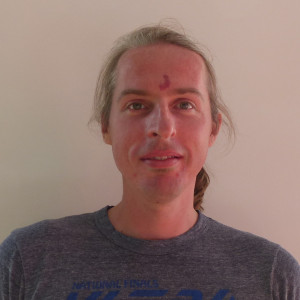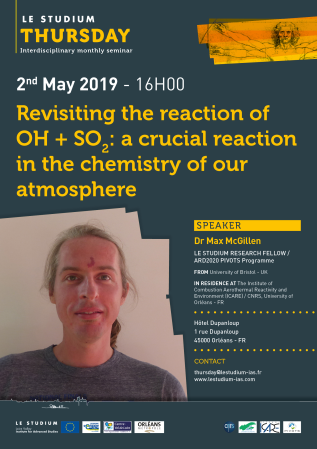Dr Max McGillen

From
In residence at
The Institute of Combustion Aerothermal Reactivity and Environment (ICARE) / CNRS - FR
Host scientists
Dr Abdelwahid Mellouki & Dr Véronique Daële
PROJECT
Experimental measurements of atmospheric chemical reactions
The goal of this project is to obtain accurate and precise data on the rates and products associated with chemical reactions occurring in the atmosphere, using a wide variety of measurement techniques available at ICARE. Some of these measurements are challenging and the fellow will be required to utilize his experience to try to address long-standing uncertainties within atmospheric chemistry. He will also helping to develop experimental protocols and techniques at the host laboratory.
Achievements so far: The fellow has been focussing on the reaction of sulphur dioxide with the OH radical. This is a very important reaction in atmosphere, since it leads to the formation of sulphuric acid, which is of crucial importance to aerosol formation, and therefore has a major effect in terms of air pollution and climate change. However, there remain some key uncertainties in this reaction rate, primarily related to the effect of pressure on this reaction. To begin with, a thorough survey of the literature regarding this reaction was performed, and the gaps in the knowledge were assessed. Accordingly the fellow has conducted a series of careful measurements in the presence of a variety of bath gases (helium, nitrogen and argon) using the pulsed laser photolysis–laser induced fluorescence (PLP-LIF) technique. The maximum pressure available to the PLP-LIF technique is ~400 Torr (below atmsopheric pressure), and therefore to complement this technique, a series of simulation chamber measurements have been made in the presence of nitrogen, oxygen, argon and air at 760 Torr. By measuring this reaction using different techniques over a wide range of conditions, we have made definitive progress regarding understanding the pressure dependence of this reaction. This allows us to compare with previous measurements, and to determine, which, if any, are accurate. It is expected that this work will result in a publication that will be of interest to the atmospheric chemical community. The fellow has also taken the responsibility of instructing a PhD student, Ms. Hajar Elothmani, in atmospheric chemistry and the techniques involved in making accurate gas-phase kinetic measurements.
Publications
Final reports
Oxidation of SO2 to sulfuric acid impacts acid precipitation and aerosol nucleation in Earth’s atmosphere in remote and polluted environments. This oxidation can take place in both the liquid and gas phase. Only the gas-phase oxidation is expected to lead to new particles because of the clustering reactions of H2SO4. This aerosol nucleation has a major effect upon air quality and Earth’s radiative balance, and is of crucial importance to the chemistry of the atmosphere.
The rate limiting step in this process is the reaction of OH radicals with SO2 to form HSO3. The pressure- and temperature-dependent reaction of OH + SO2 has been studied many times previously – since its importance was first recognized in the 1970s. Notwithstanding, some of the most recent literature has cast doubt on much of this data, especially under conditions that are relevant to atmospheric chemistry.
Here, we present measurements of the rate coefficient using the pulsed laser photolysis–laser induced fluorescence technique as a function of temperature (249–373 K) and of pressure in helium, argon, nitrogen and oxygen bath gases (30–600 Torr). In addition, relative rate measurements using a chamber at 760 Torr (N2, O2 and air) were also performed to corroborate our absolute observations. By utilizing these new data, together with the available literature data, an updated pressure- and temperature-dependent parameterization will be provided. This allows the atmospheric impact of this reaction to be constrained with a new level of certainty.

